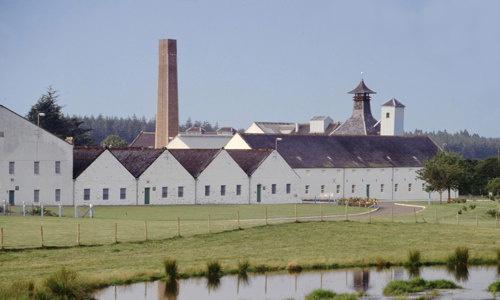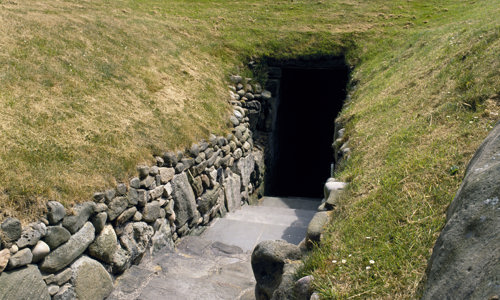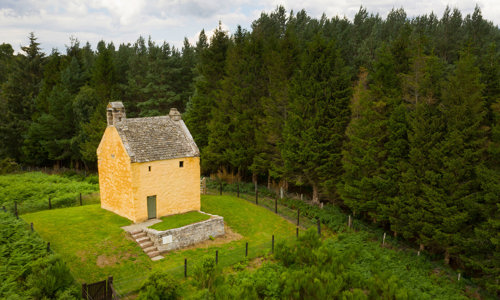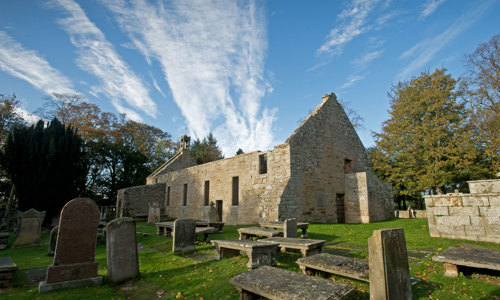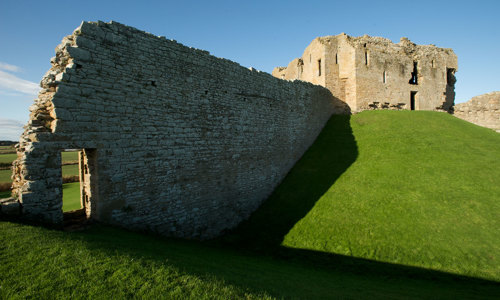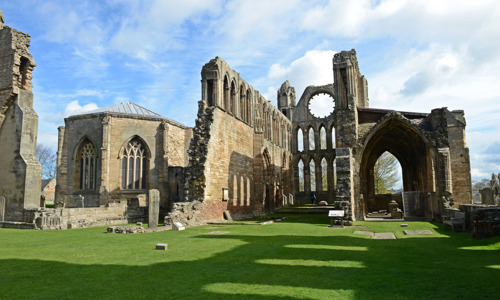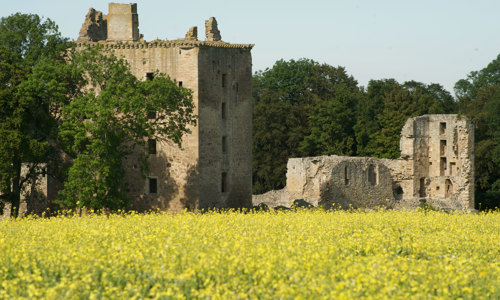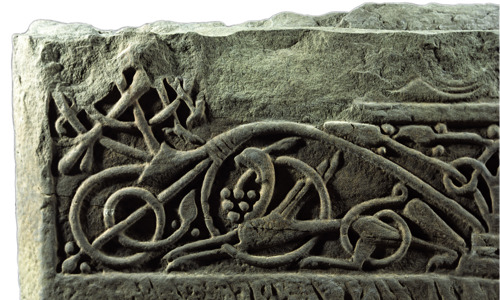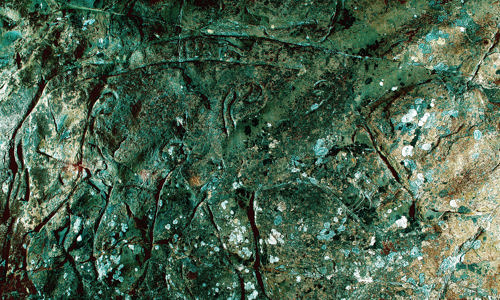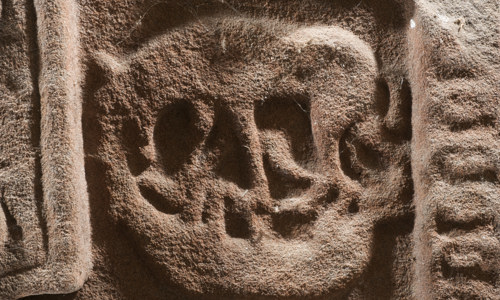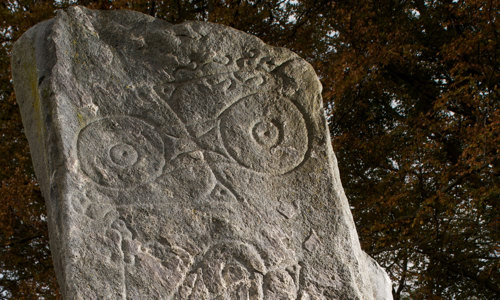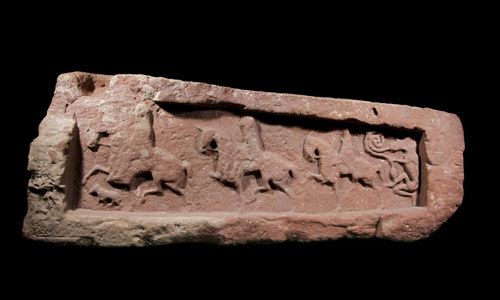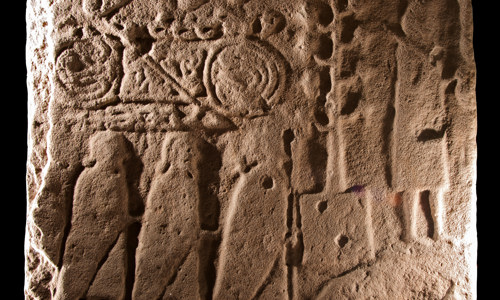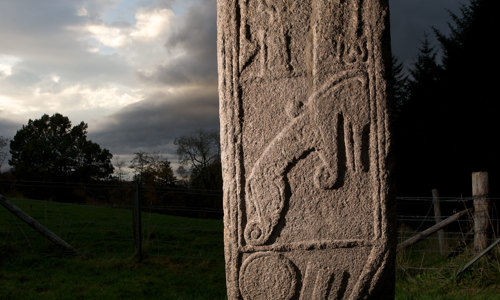History
Carved from local sandstone and standing about 7m tall, Sueno’s Stone is a marvel of late Pictish art. It was carved between the mid AD 800s and early AD 900s.
Many Pictish stones have been moved from their original location, however Sueno’s Stone probably still stands where it was first erected. Originally it would have looked out over the once-marshy floodplains of the rivers Mosset and Findhorn. It was probably designed to be a landmark, visible from a distance.
The two faces of the cross show very different images, but it is likely that their stories are linked. One side shows a Christian cross above a scene of a royal inauguration. The other shows a grisly battle scene with numerous beheadings.
The cross face
One side of the stone is dominated by a large Christian cross. Beneath the cross is an unusual scene that has been interpreted as a royal inauguration or enthronement.
Two bearded figures interpreted as priests, face each other and stoop over what appears to be a central seated figure, perhaps the king. This image is entirely unique in Pictish and early medieval Scottish art.
The battle scene
The other side of the stone features an elaborate carved battle scene, which seems to tell a complex story. From the top, the panels on this side of the cross show:
- a number of horsemen, possibly a leader and his guard, arriving for battle
- a scene of battle, with combatants on foot
- an object interpreted as a broch, fort, or church bell, with a number of headless corpses to the left
- a group of horsemen fleeing from infantry
- piles of headless corpses and severed heads below either a bridge or a tent
An obscured panel at the very bottom may show the dispersal of the defeated army.
Interpreting the stone
We cannot know for certain what story the stone is telling. However, some scholars suggest it may relate to events in the mid-800s, when Gaelic speaking kings seem to have taken over lordship of the Pictish peoples. It was a time of great upheaval, with the country under pressure from marauding Norsemen.
If the battle scene depicted is real, it might represent a victory of Cinaed mac Ailpín (Kenneth MacAlpin) or could also refer to his successor Domnall (Donald I), who consolidated Cinead’s hold on this part of Scotland. The inauguration scene may therefore represent the enthronement of either of these important kings.
However, the scenes may not depict real battles. They could just as easily be a series of Christian messages or a foundation legend. It may also provide evidence for Scottish or Pictish beheadings.


